
Q. I've been successfully keeping a 45-gallon saltwater aquarium for six years, but recently lost three of my saltwater fish overnight to a mysterious problem. Two tangs (a yellow tang and a hepatus tang), both of which were five years old, and a bicolor Pseudochromis, which I had for 15 months, died. Three other fish survived — a longhorn cowfish, a bluehead wrasse and a maroon clown — with no outward signs of any problems. I did nothing unusual during the preceding period.
I do water changes (15 to 20 percent every two weeks) and I feed once a day. I tested the ammonia, nitrite and nitrate and all were below measurable levels. However, the pH was low, at 7.8. Is a lowering pH to be expected in a long-running system, even when regular water changes are made? Is this the reason for the sudden deaths? Any change in pH was almost certainly a gradual one, so why did they die so suddenly?
I did a 20-percent water change and began adding some Sea Buffer to get the pH up to around 8.2 gradually. I do not want to add this indefinitely, so any guidance you can provide would be appreciated.
A. I am sorry to hear about your mysterious fish mortalities. After keeping saltwater fish for more than 25 years and being involved in retail fish stores for more than 10, I have seen or heard of incidents like yours time and time again. Although it is impossible for me to tell you exactly what happened based on the information you have provided, let's go through a list of possible causes.
In these situations the first thing I suspect is that there may have been a sudden disease outbreak. There are numerous fish parasites and pathogens that can occur relatively quickly because of any alteration in the environment, such as a sudden change in salinity, temperature, dissolved oxygen content or some other water parameter, the introduction of a new tankmate (which can cause behavioral stress) or involuntary transmission from an infected aquarium (i.e., on your hands, a fish, a piece of equipment or substrate). However, most diseases are either conspicuous during certain phases of the life cycle or will cause a noticeable change in the fish's behavior or appearance (reddening of the skin, lesions, chaffing on the substrate, rapid respiration, etc.) before death occurs. So, if parasites or pathogens were the cause of your fishes' deaths, I would suggest you would have seen it coming!
Another cause of fish die off is ammonia poisoning. Because you checked this parameter and found it to be within an acceptable range, we can count that possibility out. Also, high ammonia levels are not common in well-established aquariums unless biological filtration has been disturbed somehow (e.g., filter failure, medication misuse).
Although a pH of 7.8 is not a cause for concern in a fish-only aquarium, some fishes are sensitive to sudden changes in pH, showing signs of distress at abrupt drops of as little as 0.2 pH points (Stoskopf 1993). Therefore, it is important to keep the pH as stable as possible, and if adjustments need to be made, they should be carried out gradually.
Yes, dropping pH is an inherent problem because the biological processes occurring in the aquarium system produce nitric acid, which lowers the pH. Although seawater and calcium carbonate substrates, like crushed coral, are natural buffers, they lose this ability with time. The best and easiest way to maintain the appropriate pH level is to carry out monthly water changes, but even then it may drop (as you have seen).
Both sodium bicarbonate and Sea Buffer can be used to raise saltwater aquarium pH, but remember to boost it slowly to avoid stressing your fish. For every 20 gallons of aquarium water dissolve 1 level teaspoon of sodium bicarbonate in a gallon of aquarium water. Add this to your aquarium over a one-hour period. Check the pH the next day at the same time and repeat this procedure if necessary. (Note: The pH will fluctuate during the day — it peaks in the afternoon — because of changes in carbon dioxide usage resulting from algae photosynthesis.)
For those readers who have a persistent problem with low pH it may be that the aquarium is overcrowded, it has insufficient filtration or there is not enough gas exchange at the water's surface. The latter often occurs if the aquarium is equipped only with powerheads and has a tight-fitting top. To rectify this problem, add an airstone and/or make a fiberglass screen or egg crate top to allow adequate gas exchange. If you have a trickle filter and the dry portion is tightly sealed, place an airstone into this chamber.
One thing you did not check is the dissolved oxygen levels. I have found that this is one vital parameter that is often overlooked, largely because accurate testing equipment is expensive or the kits that are affordable and easy to use are often inaccurate. It is important to maintain the dissolved oxygen levels in your aquarium as near to 8 mg/l (i.e., saturation) as possible, and always above 5.5 mg/l, if you hope to keep your fish healthy.
Oxygen deprivation can be directly responsible for fish deaths or it can indirectly cause a reduction in the immune response. Some telltale signs of oxygen deprivation include increased respiration (the gill movements may be twice as frequent as during "normal" respiration), listlessness and blotchy coloration.
Many conventional systems (i.e., with undergravel filters) have low dissolved oxygen levels, especially when only powerheads are used to circulate the water through the gravel and a tight fitting top is placed on the aquarium. In order to achieve maximum aeration it is important to create turbulence at the water's surface. This can be generated by the output of a powerhead or external filter, one or more airstones or a surface skimmer (often used with a trickle filter).
However, if the surface of the aquarium is enclosed and no oxygen is pumped into the aquarium, the air space between the water's surface and the glass will become oxygen impoverished. In this situation, surface agitation will allow for minimal gas exchange. An air pump or one of the new external filters with a venturi valve to enhance oxygenation (i.e., Millennium by Aquarium Systems) will help keep these levels high if the aquarium is tightly sealed to prevent your fish from jumping out.
Oxygen deprivation may also occur if an aquarium has inadequate filtration, a dirty filter, contains too many fish, has a high water temperature, is overfed or if the power goes off. To avoid problems with heterotrophic bacteria blooms, which can quickly deplete oxygen levels, it is important not to overfeed. Remove uneaten fish food immediately.
You should be aware that the dissolved oxygen levels in aquariums, especially taller aquariums with little circulation, will be lower toward the bottom of the aquarium than at the surface. This is one reason why good water circulation is of the utmost importance.
A fish's oxygen consumption rates are affected by water temperature, species specific differences, locomotor activity and the quantity of food eaten. As water temperature increases so, too, does basal metabolism and the need for oxygen. For example, Brett and Groves (1979) suggested that oxygen consumption in some fish increases by 2.3 times for every 18-degree-Fahrenheit increase in water temperature. Although the temperature in most aquariums is not going to vary that much, keeping your fish at a slightly lower water temperature (e.g., 74 degrees Fahrenheit) offers two benefits: it will not only reduce a fish's oxygen demands, but cooler water has a greater oxygen carrying potential as well.
I have also seen hydrogen sulfide cause sudden fish mortality. This compound, which is a byproduct of anaerobic metabolism, is extremely deadly. It can be liberated into the water when anoxic (low oxygen) areas of the gravel bed are disturbed or when a canister filter is turned off for a long period of time and then is turned back on. If the bottom materials, like crushed coral or live sand, are provided with a constant flow of oxygenated water or disturbed frequently enough, by the aquarist or by fish, then hydrogen sulfide should not be a problem. If you turn off a canister filter for a long period of time (four hours or more) it is important to take it apart and clean it before turning it back on. Airborne contaminants, such as tobacco smoke, insecticides, paint fumes, glass cleaner, furniture polish and so on, can kill fish as well.
The biggest quagmire most hobbyists face in situations like yours is why do only some of the fish die, not all of them? Well, it has to do with species specific differences in sensitivity to stress, disease, toxins, oxygen deprivation and so on. The ability of a species to survive a traumatic situation is, in part, based on its genetic programming, which has been honed and modified over millions of years so that it is perfectly adapted to the environment in which it lives.
There are often differences in survivability between individuals of a given species as well, which may be a function of their condition when a potentially life threatening event occurs. For example, a well-fed fish exposed to a disease organism will be more likely to fight it off than one that is poorly nourished.
Fish Physiology (W. S. Hoar, D. J. Randall and J. R. Brett, eds), Vol III:279-352. Academic Press, New York London.Stoskopf, M. K. 1993. Fish Medicine. W.B. Saunders Co. Philadelphia. Pp. 882.
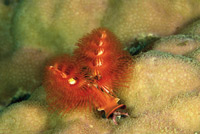 Aiptasia
Q. I have Aiptasia all over my aquarium and have been
Aiptasia
Q. I have Aiptasia all over my aquarium and have been
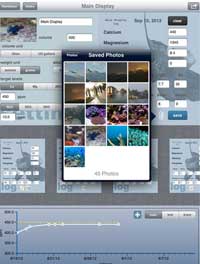 Reefdoser Pro for iPad Ships
Reefdoser Pro for iPad Ships
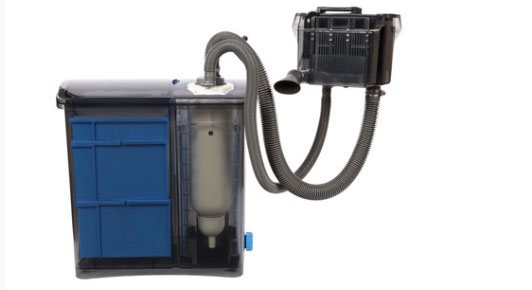 Aquarium Filtration Done Right
Today, keeping unique aquatic species is now commonplace tha
Aquarium Filtration Done Right
Today, keeping unique aquatic species is now commonplace tha
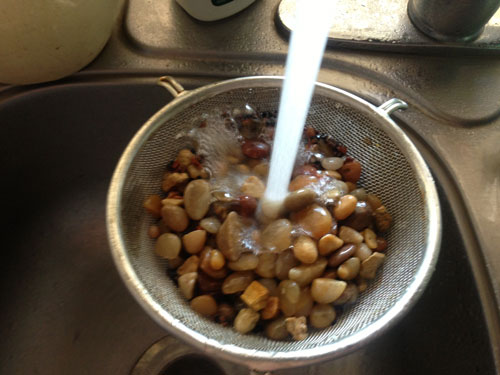 How to Get Rid of Cloudy Aquarium Water
Occasional cloudy water is an issue for nearly all aquarists
How to Get Rid of Cloudy Aquarium Water
Occasional cloudy water is an issue for nearly all aquarists
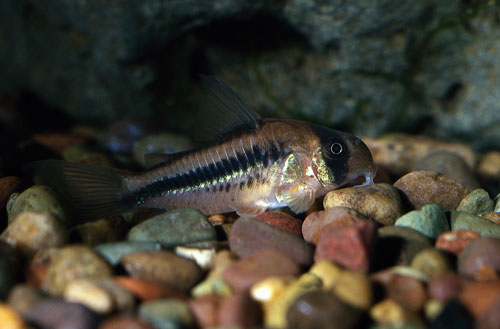 Top 10 Fishkeeping Mistakes
Aquarists can say they’ve never made a mistake in their fish
Top 10 Fishkeeping Mistakes
Aquarists can say they’ve never made a mistake in their fish
Copyright © 2005-2016 Pet Information All Rights Reserved
Contact us: www162date@outlook.com